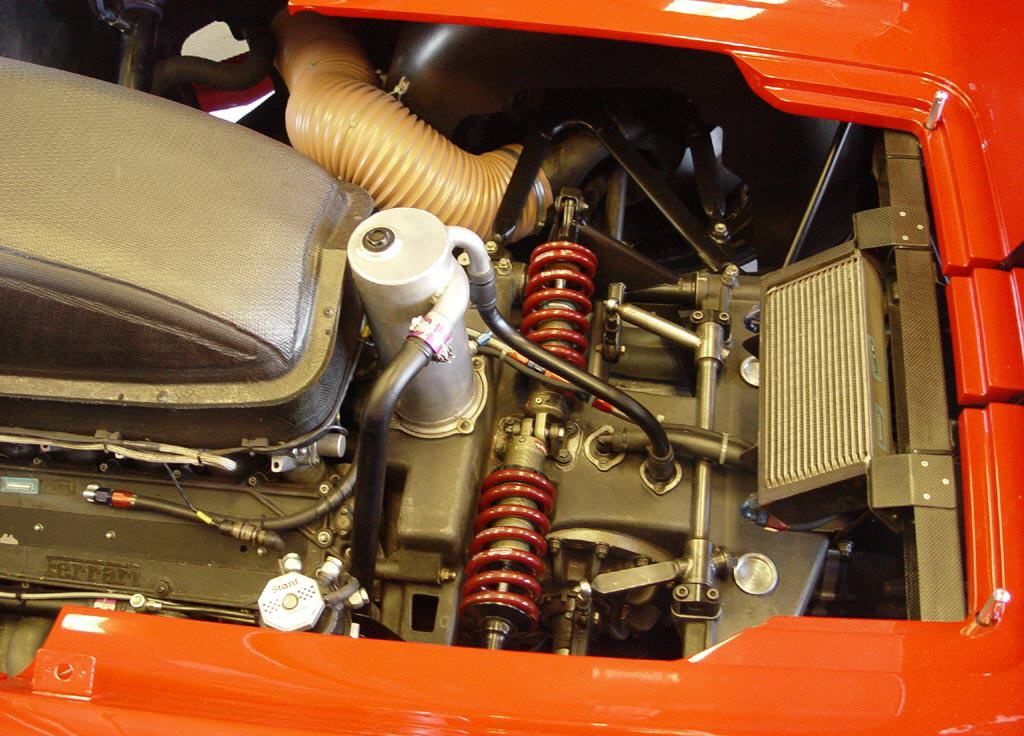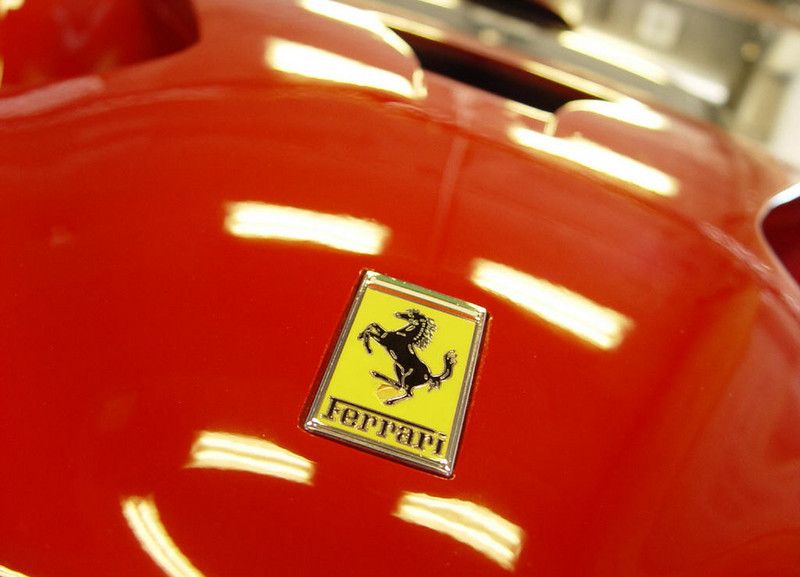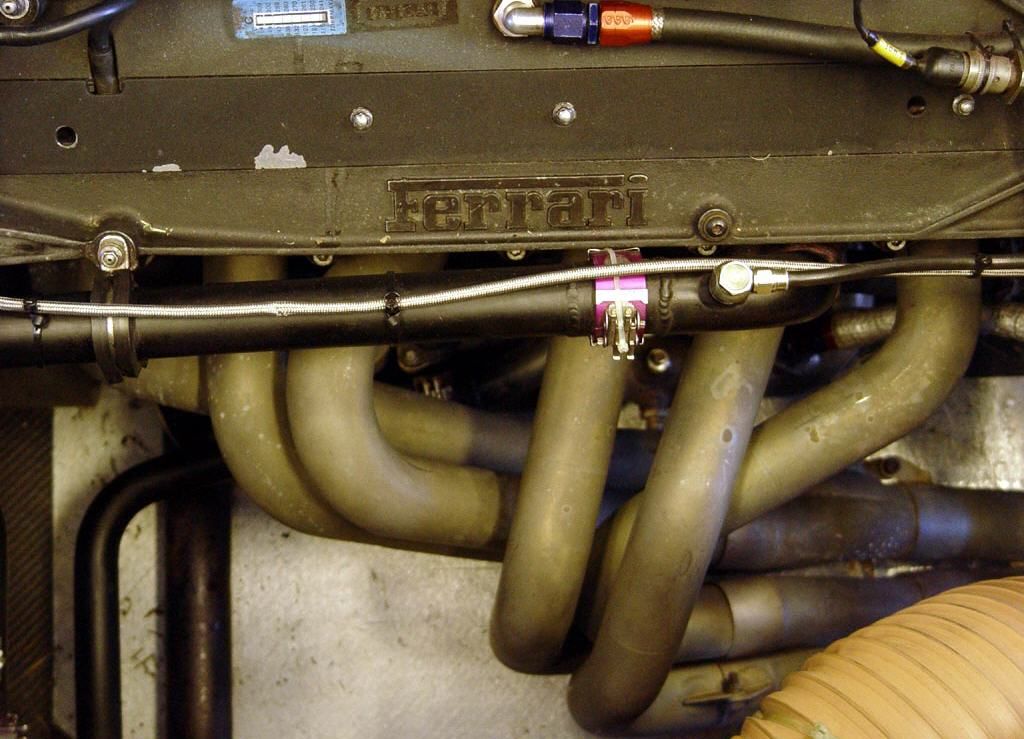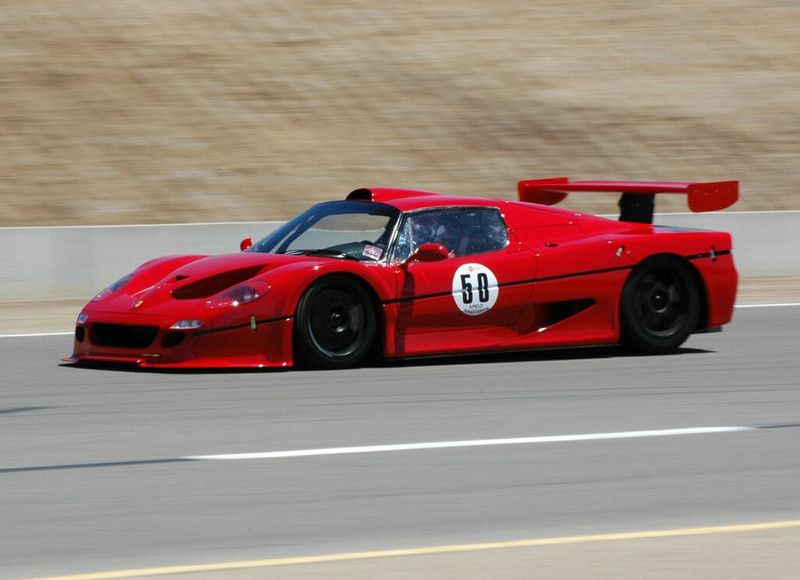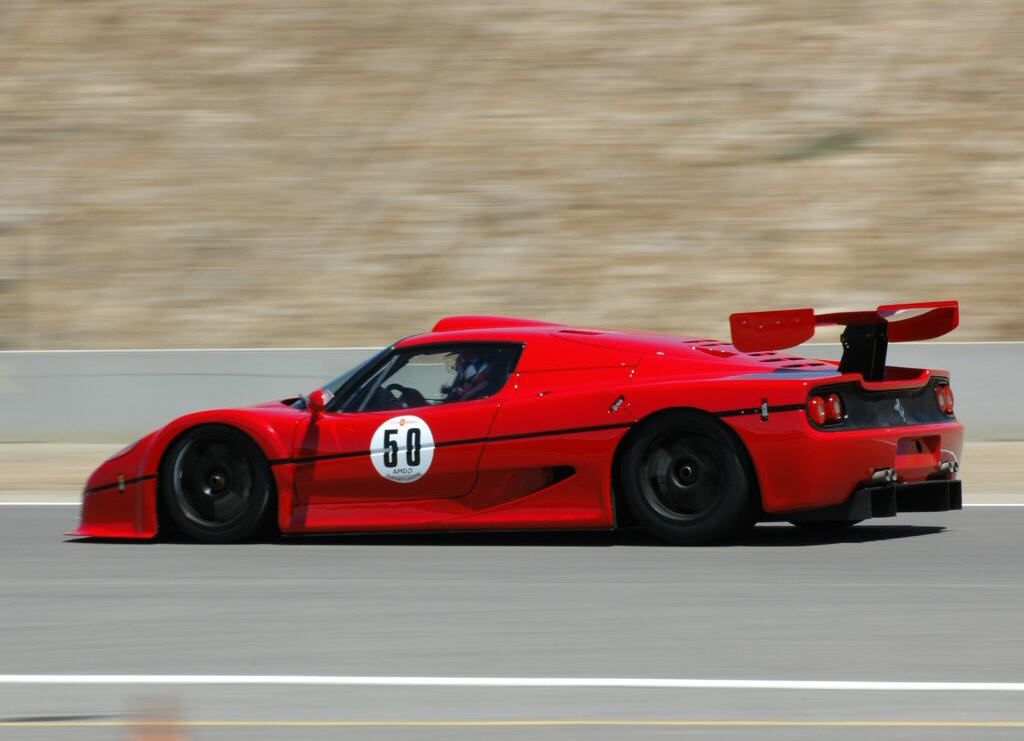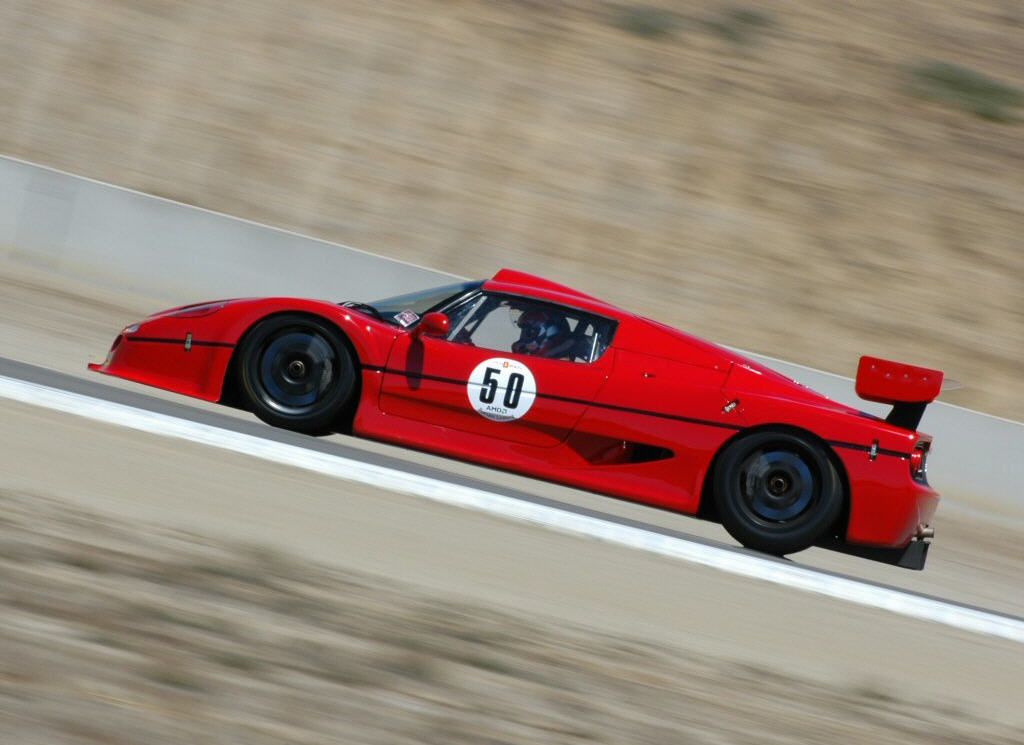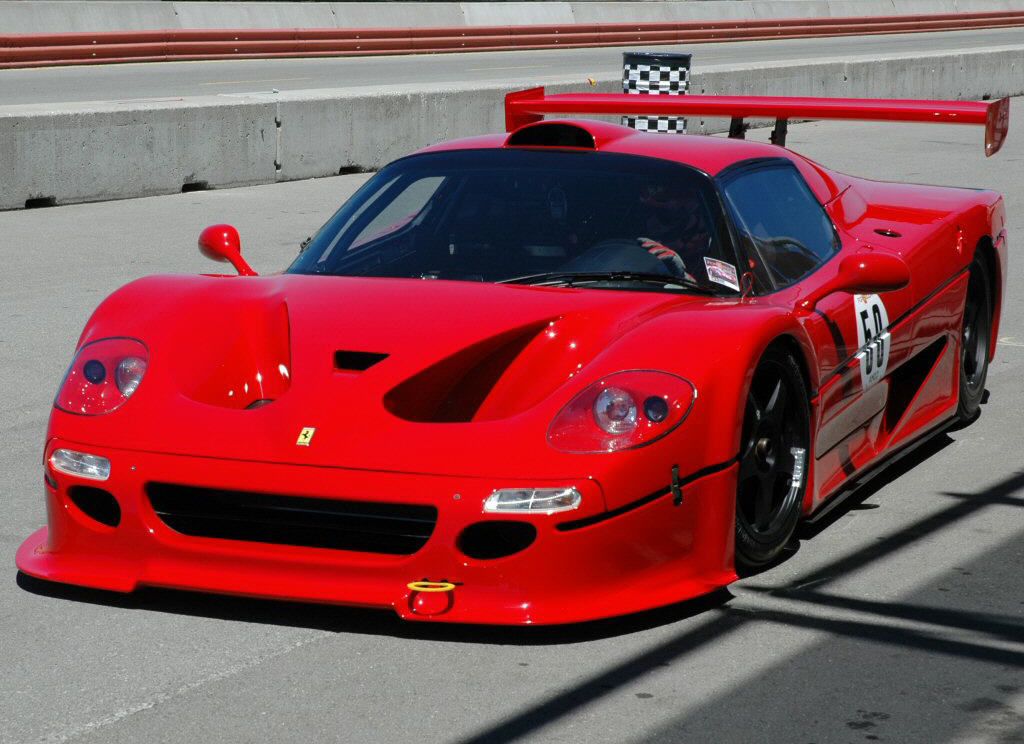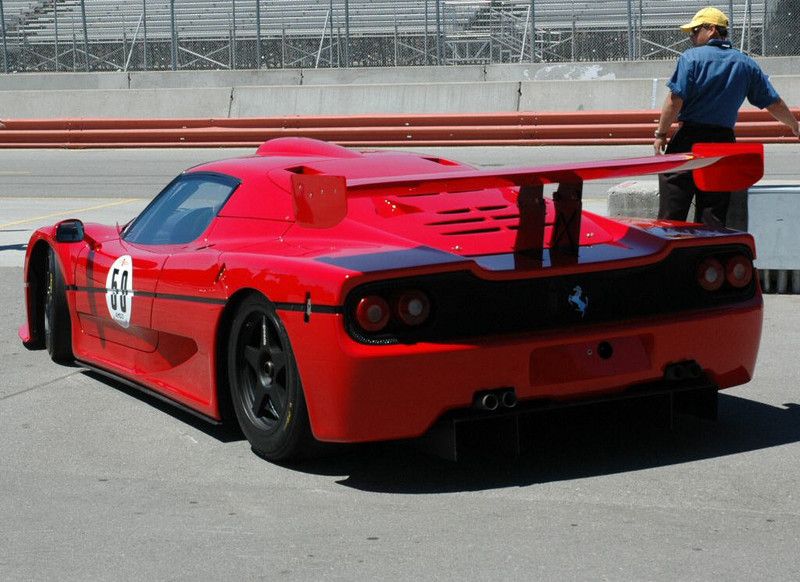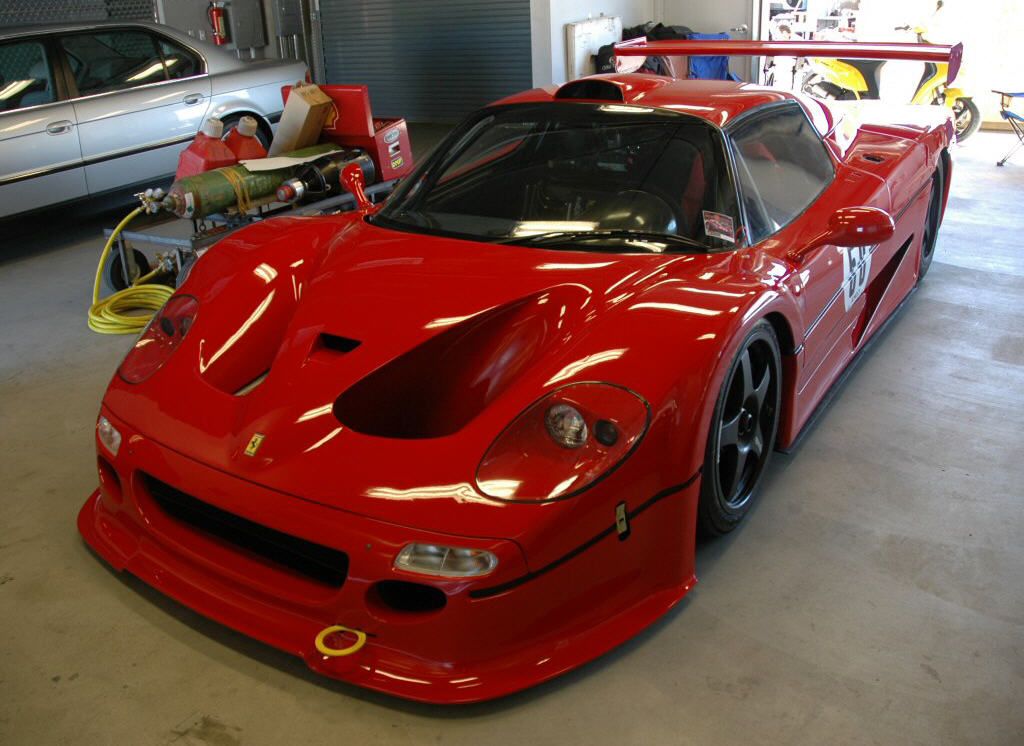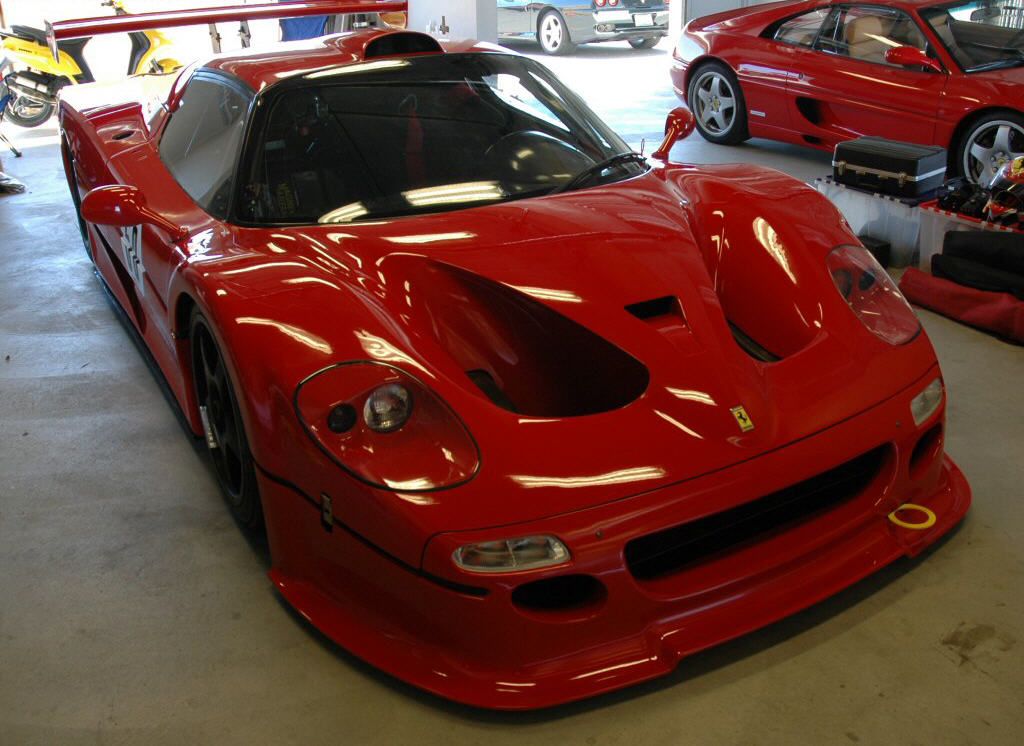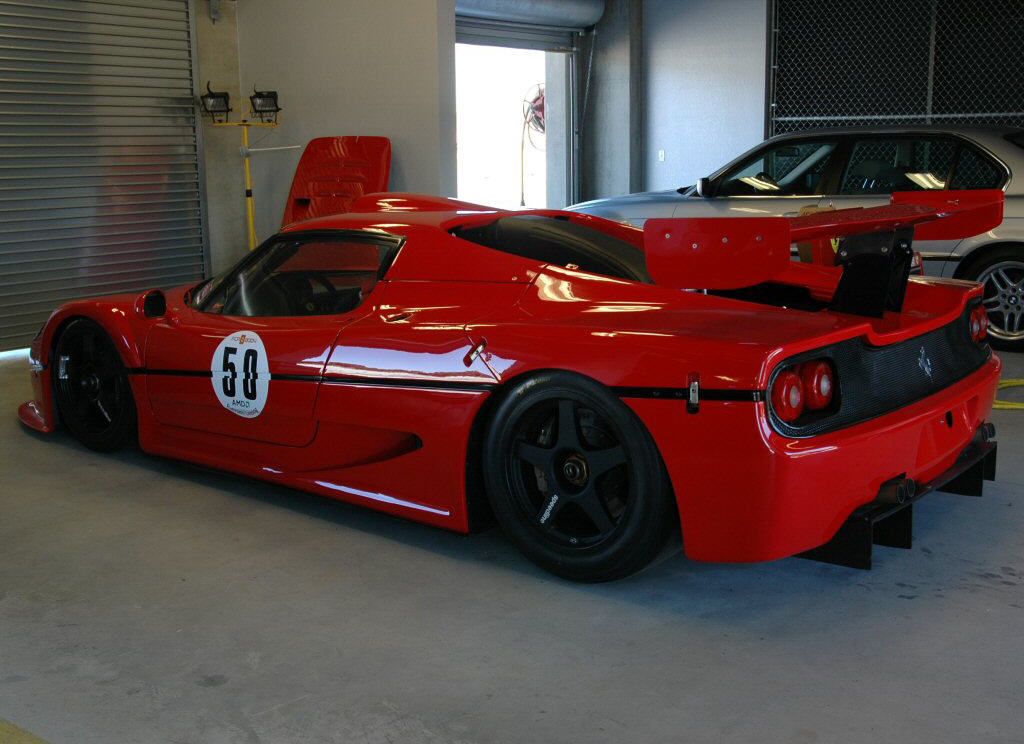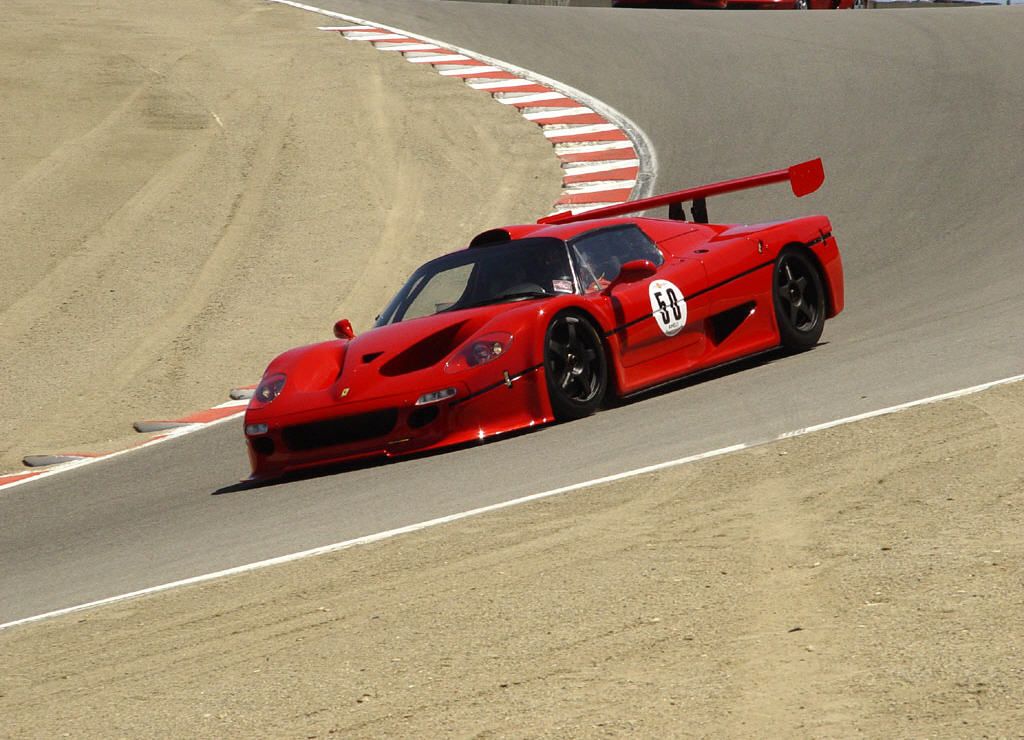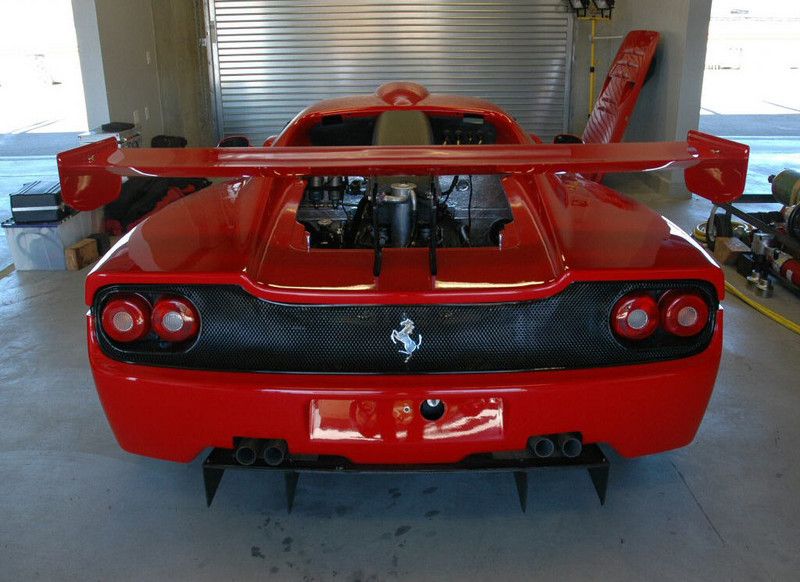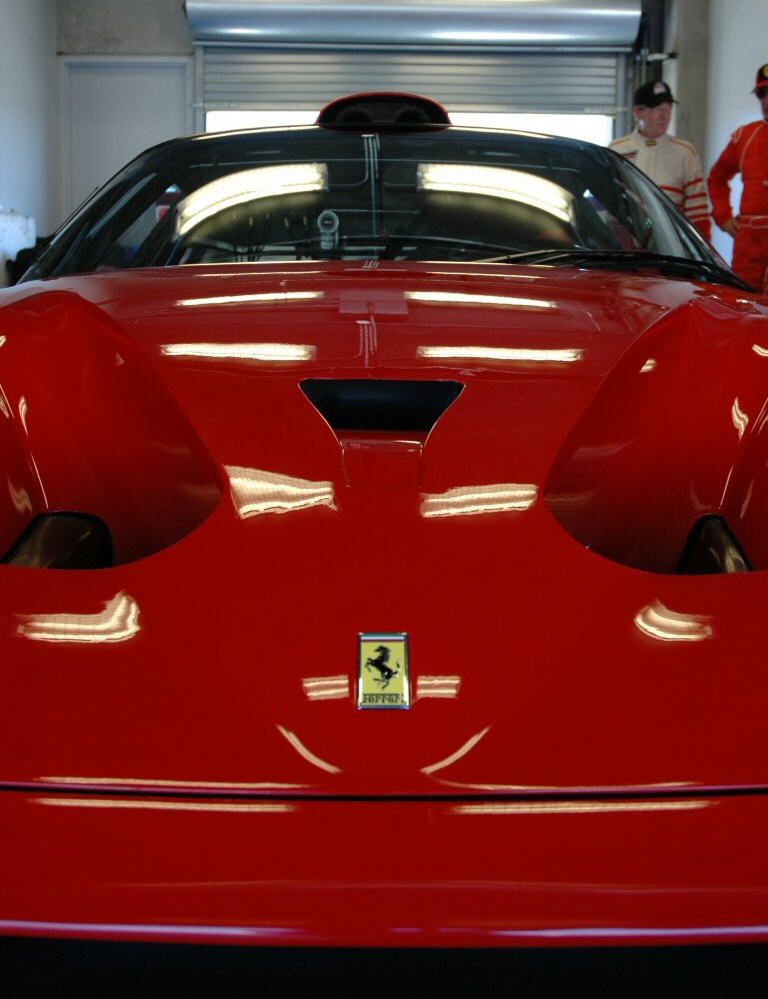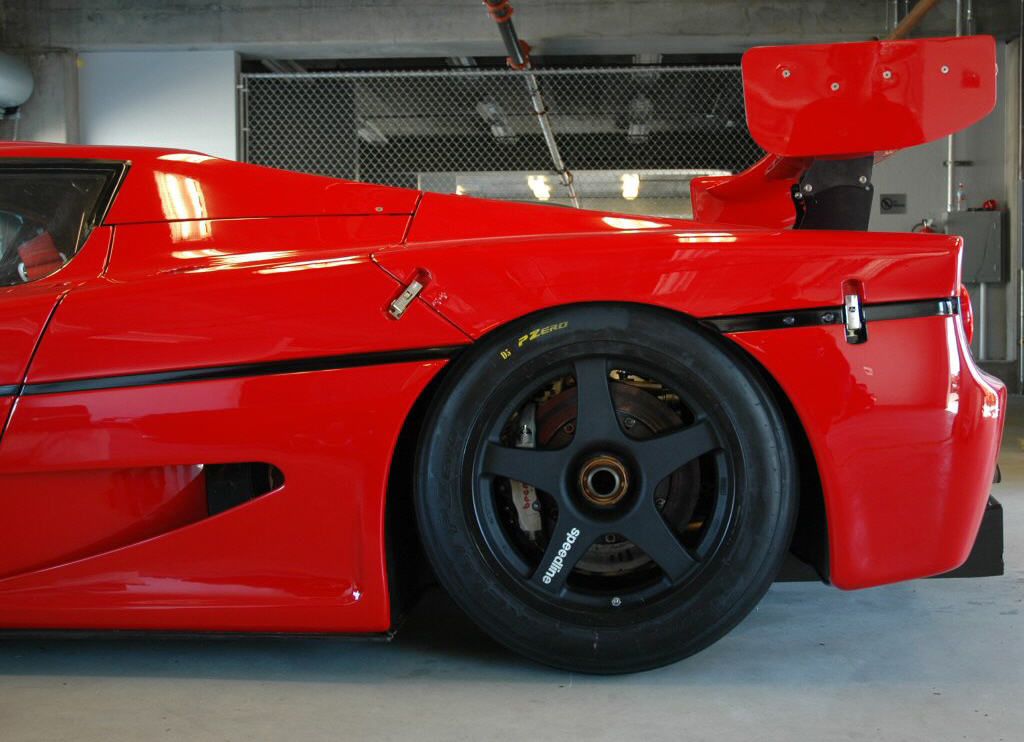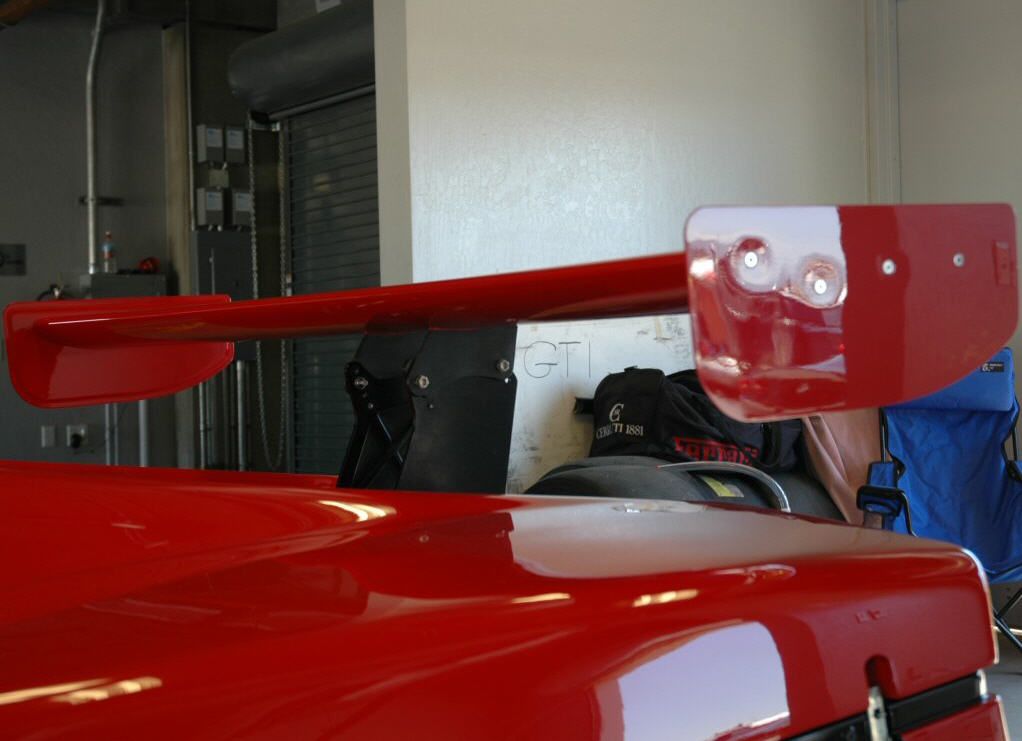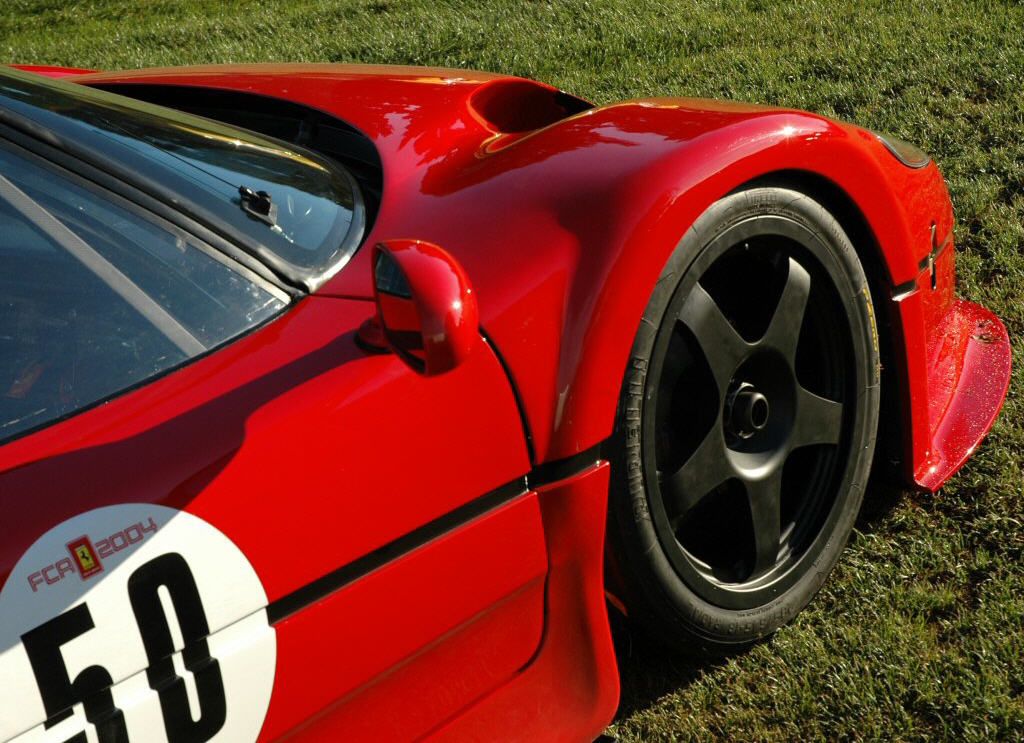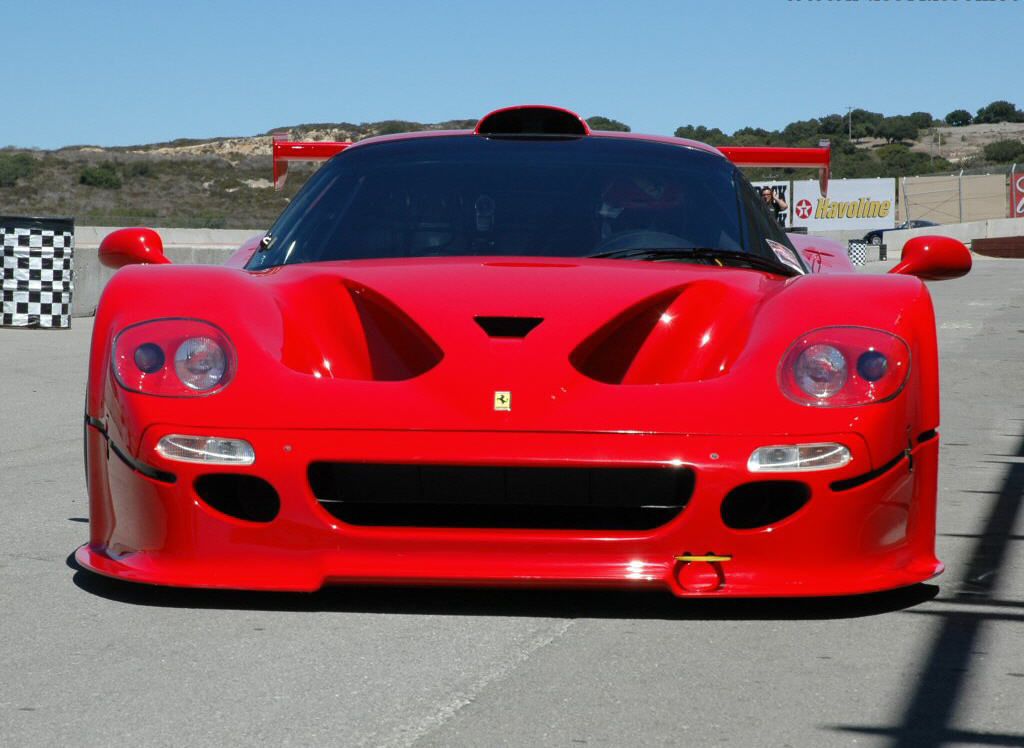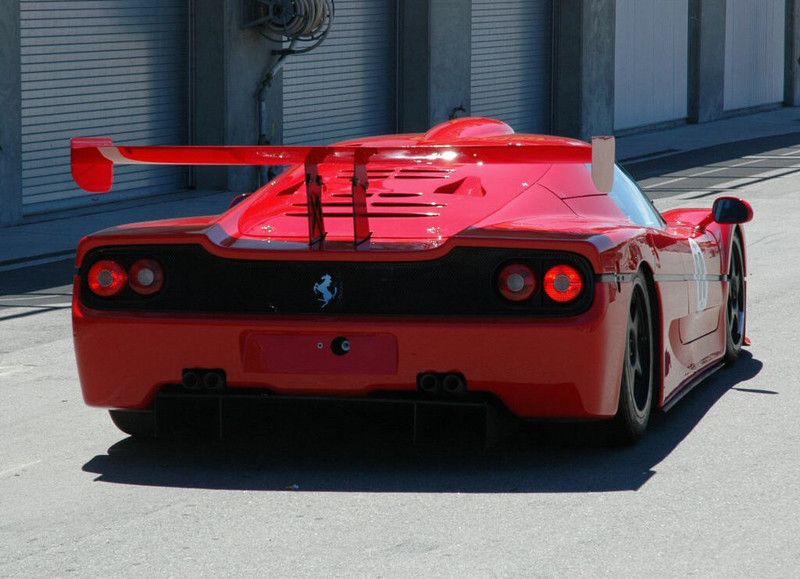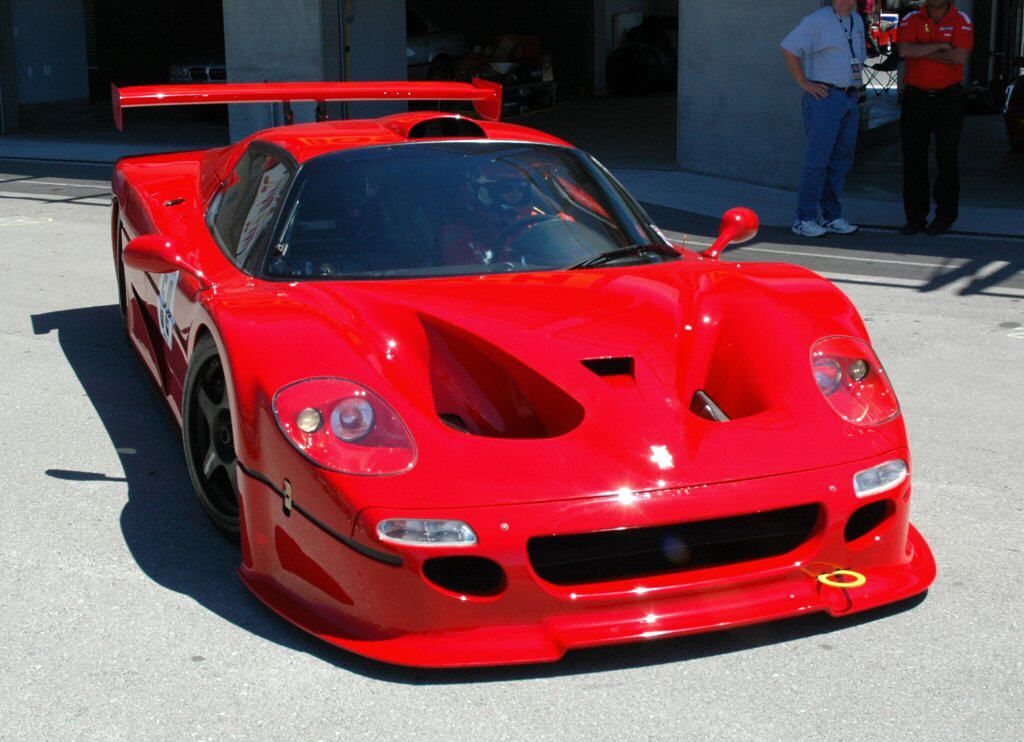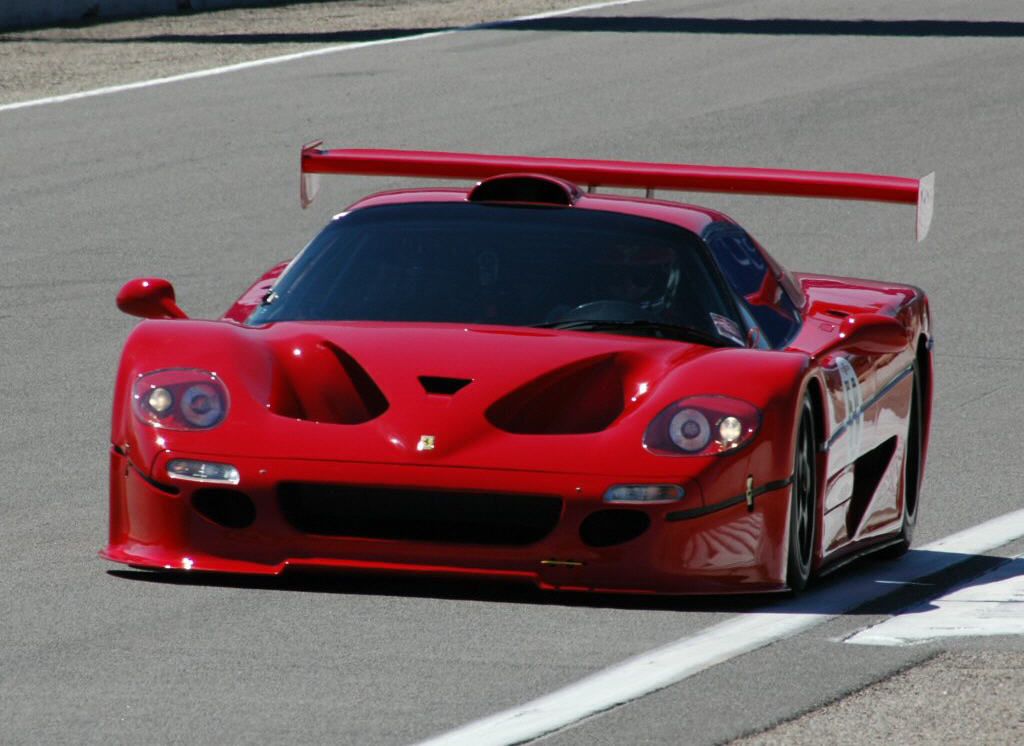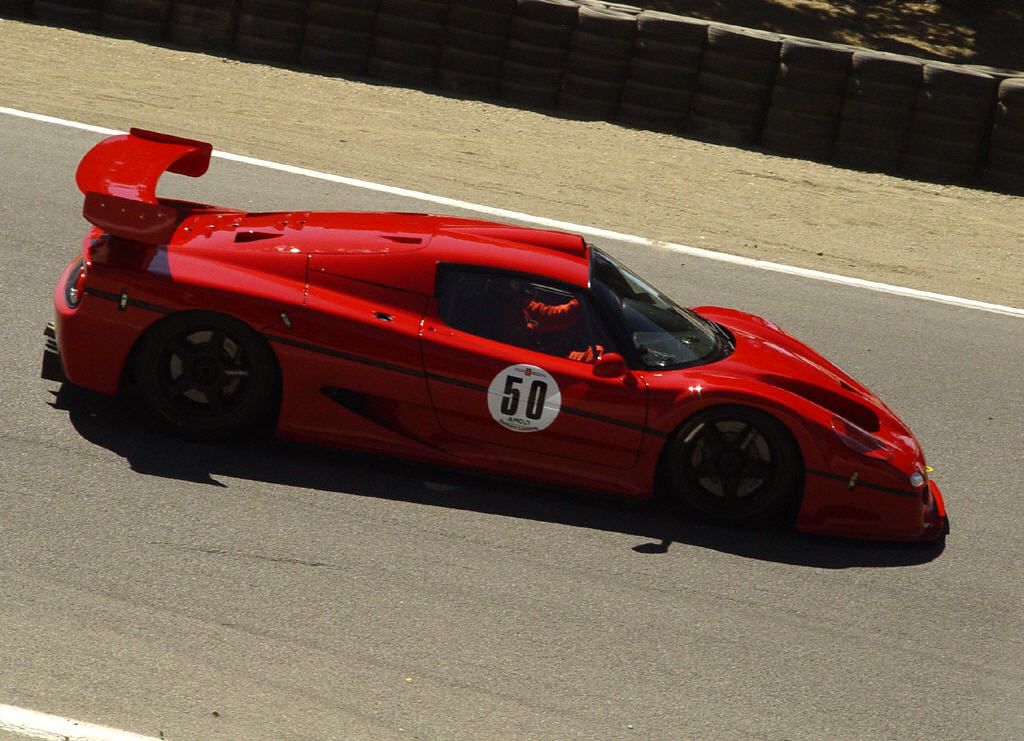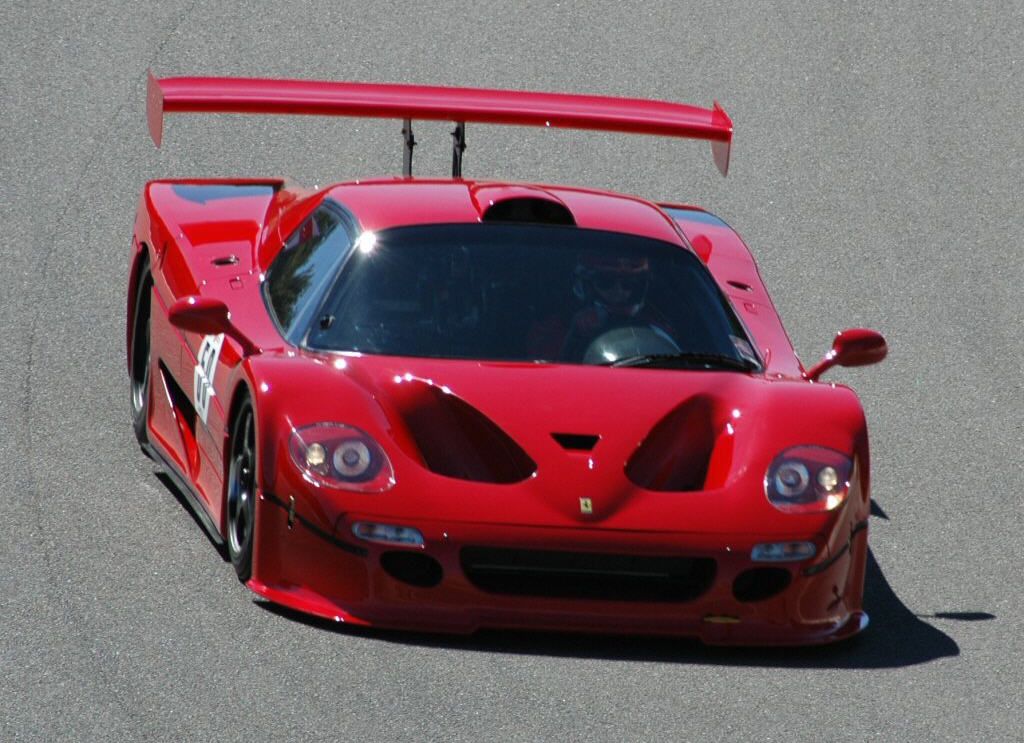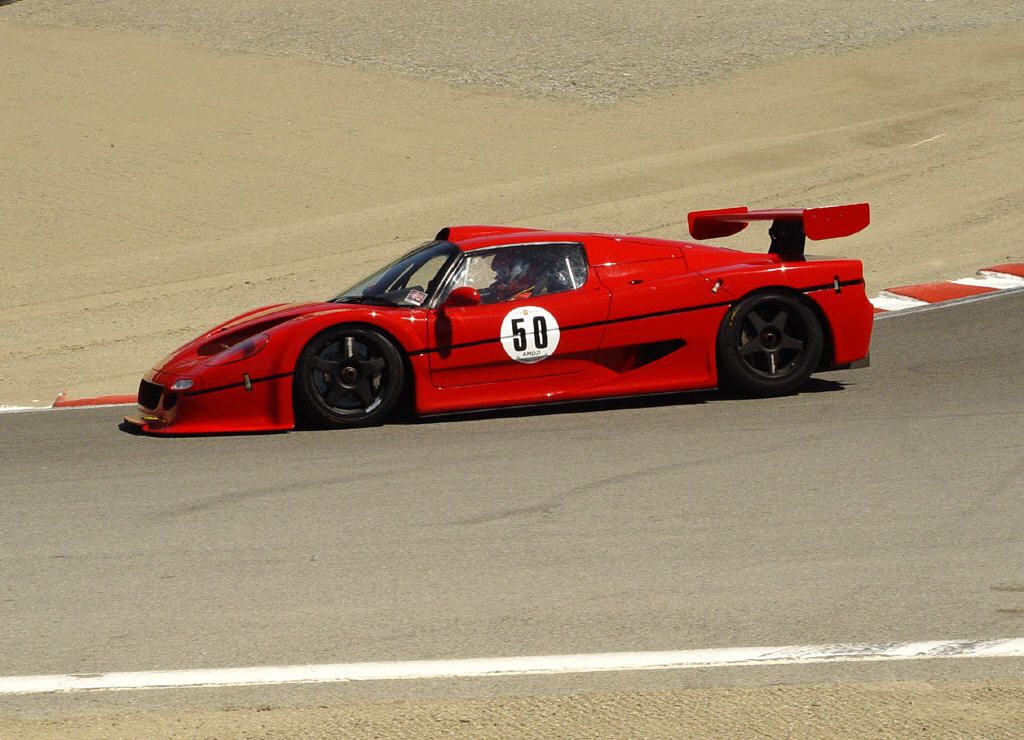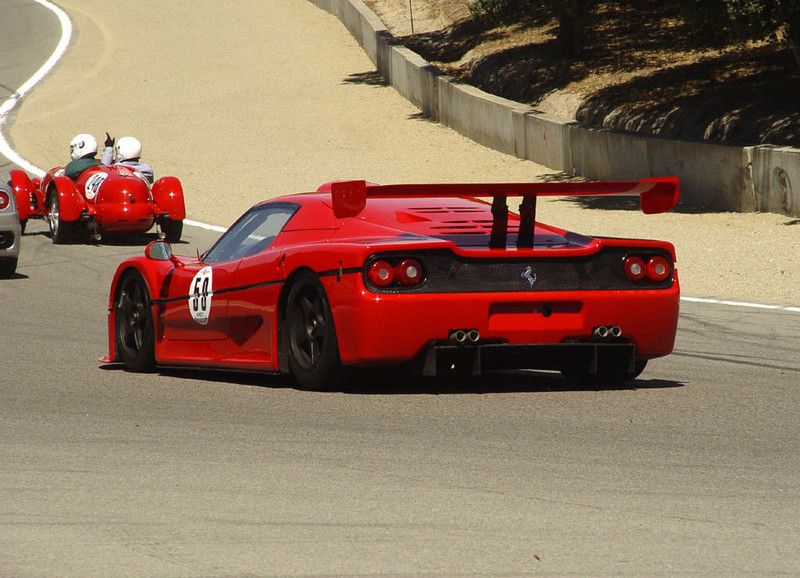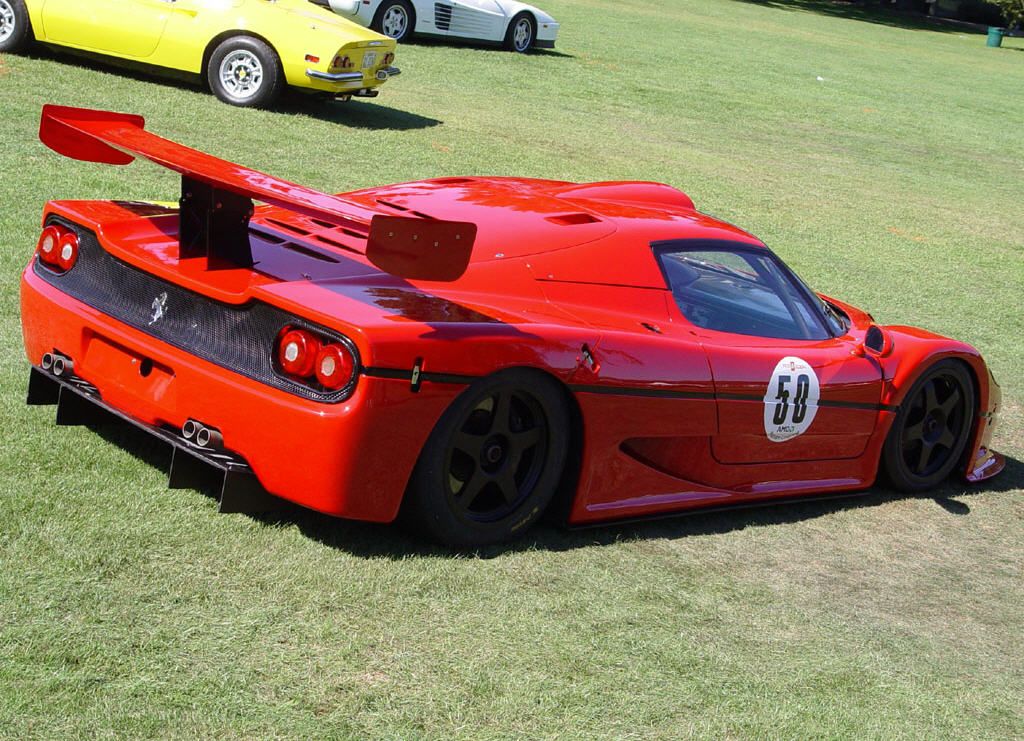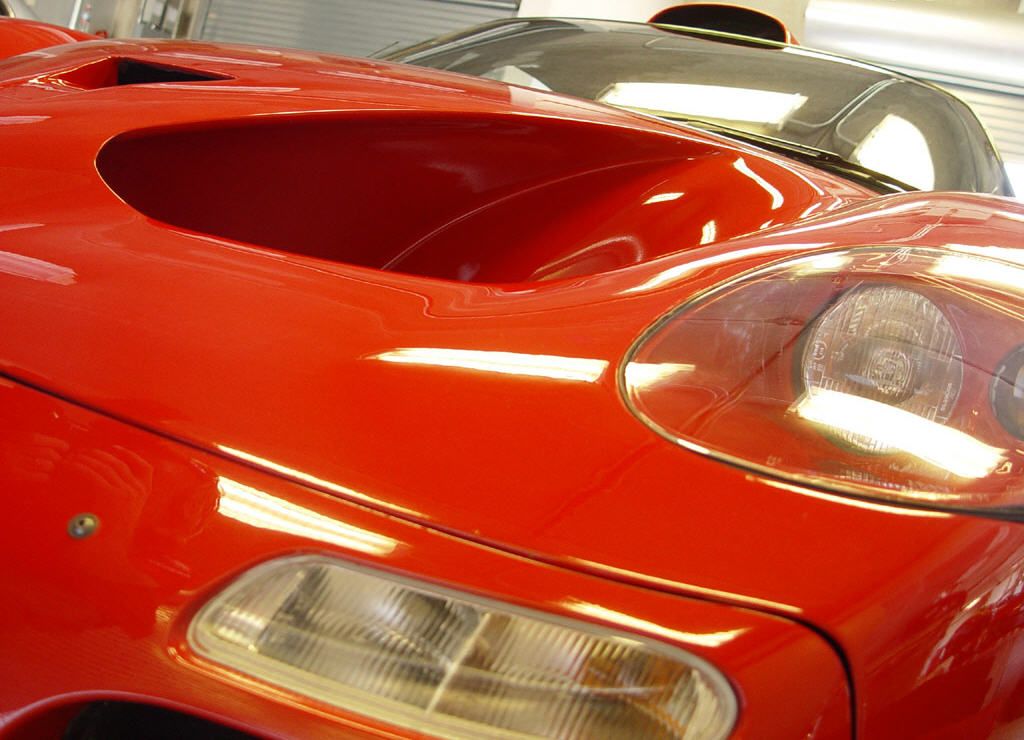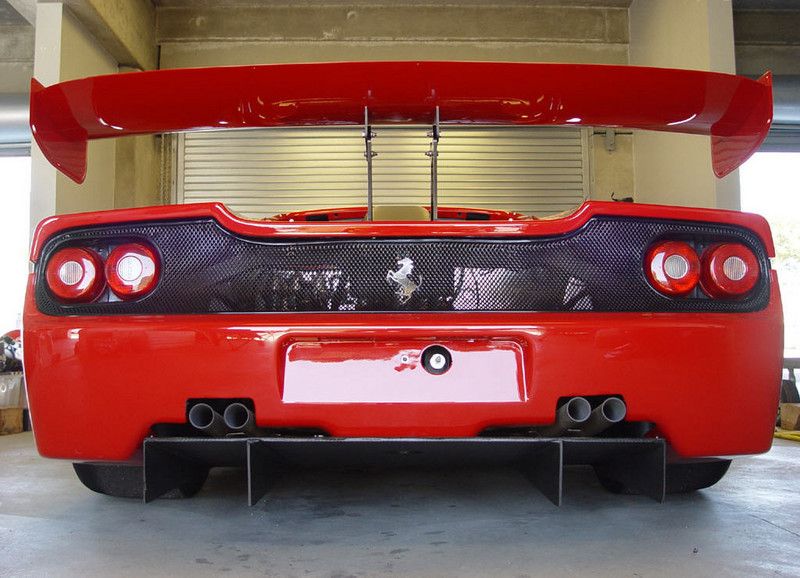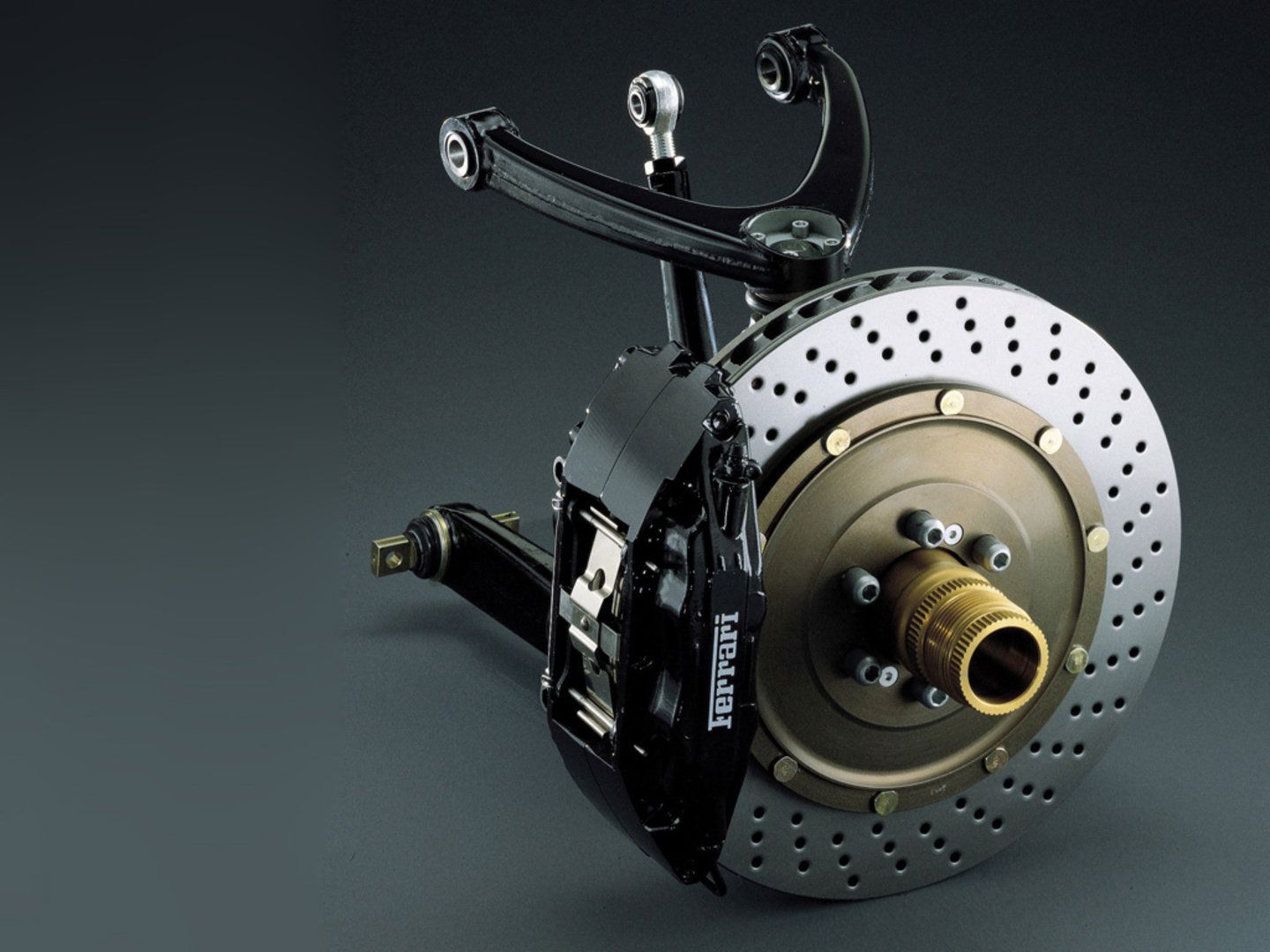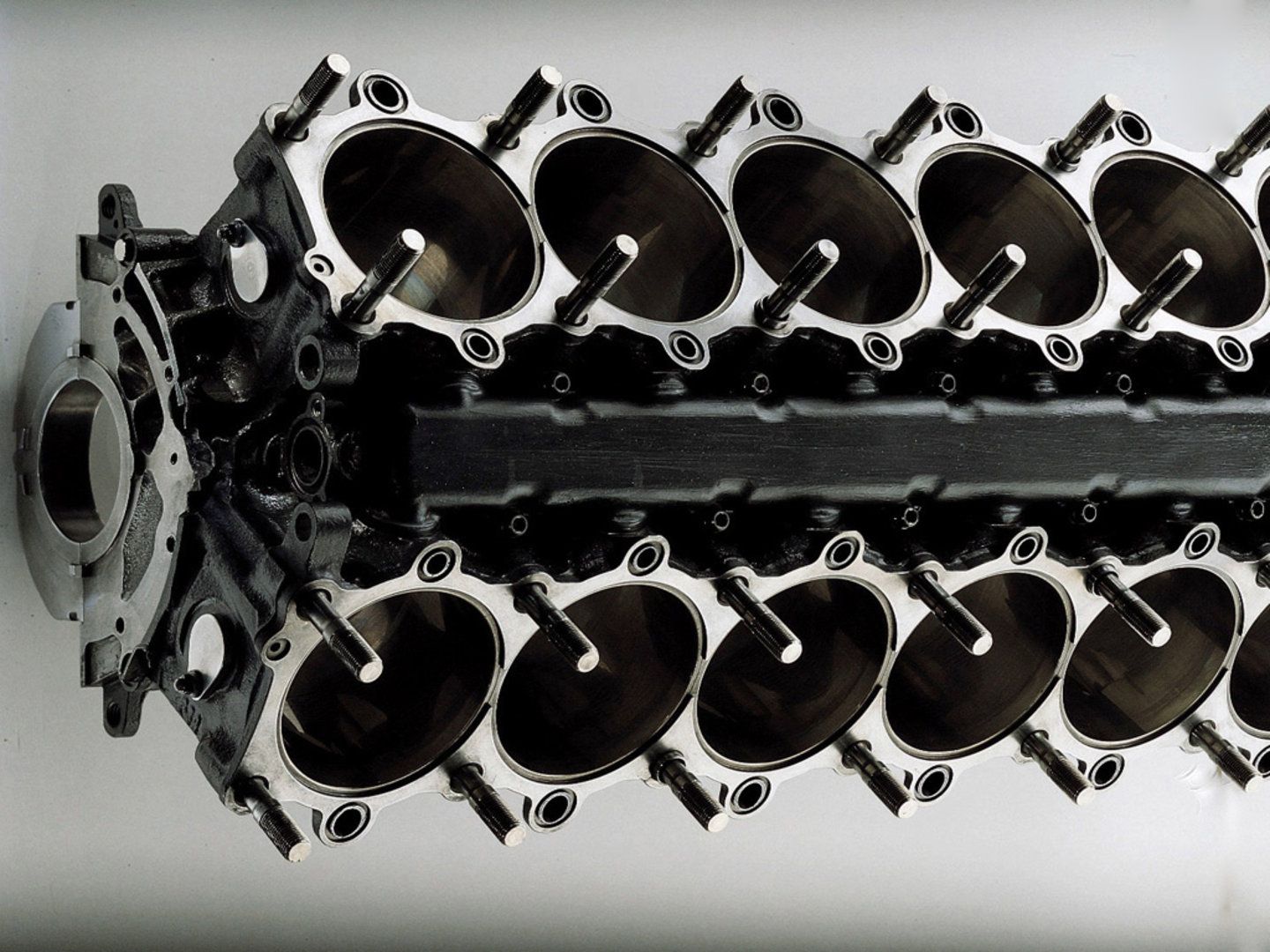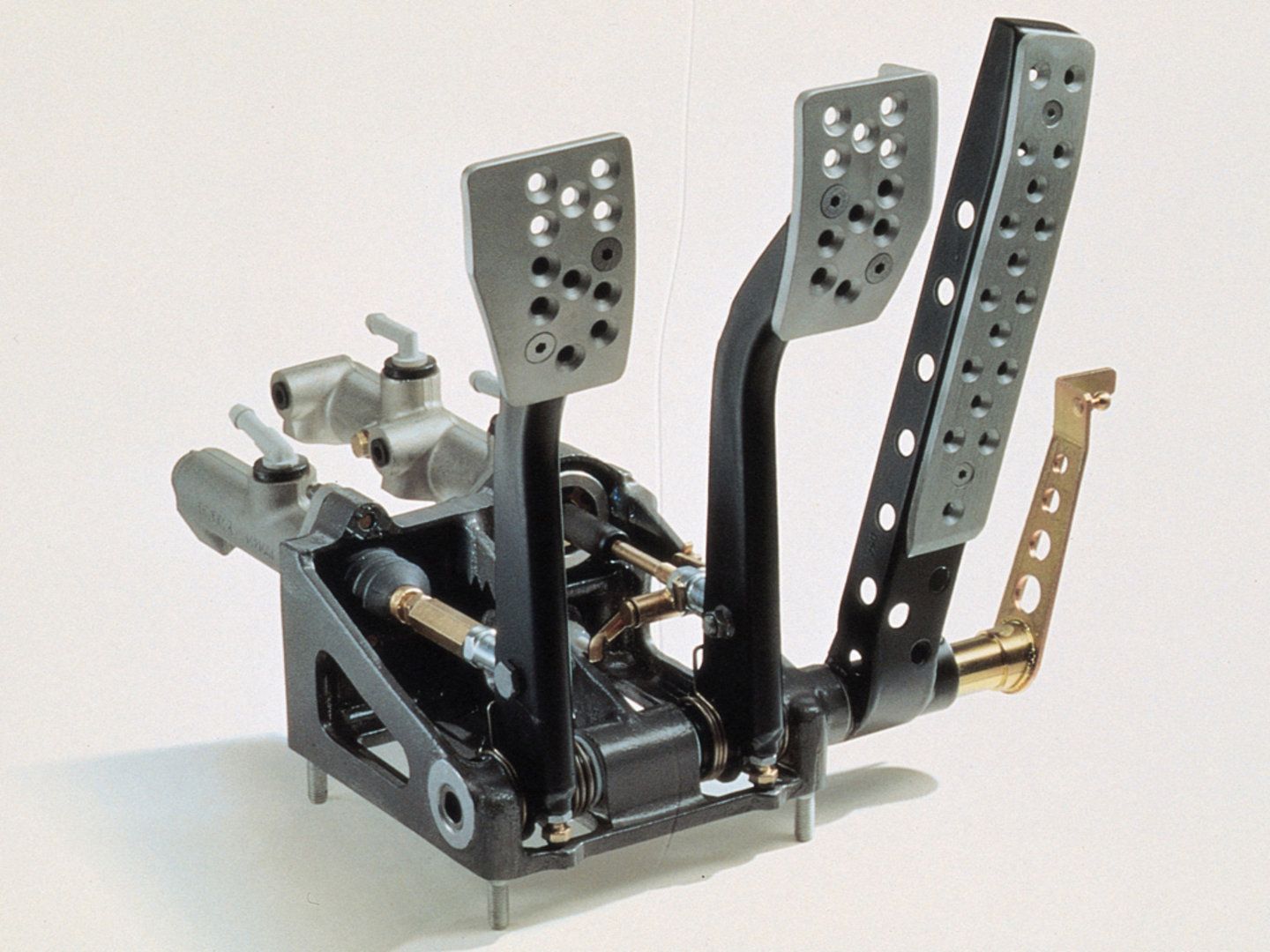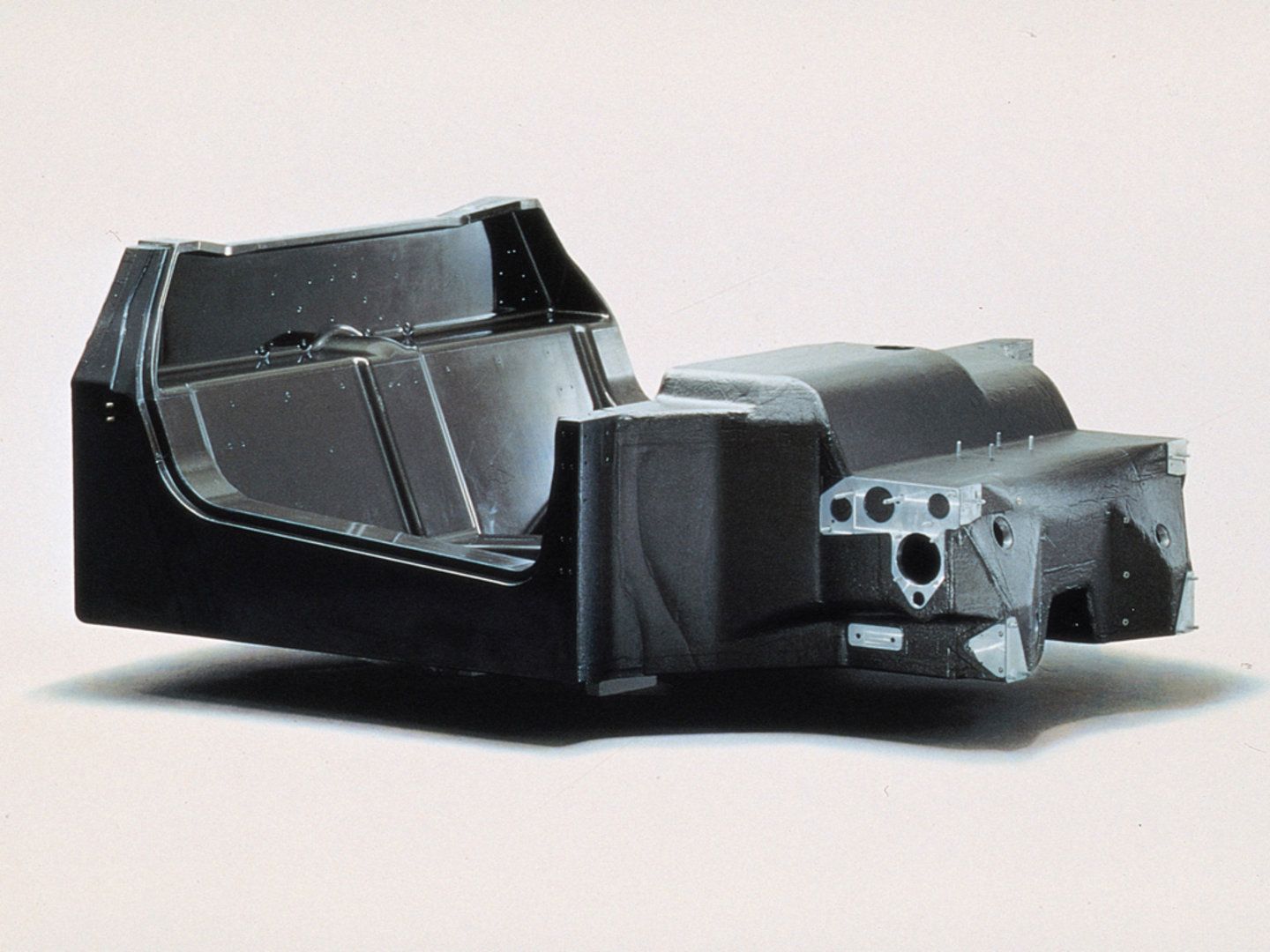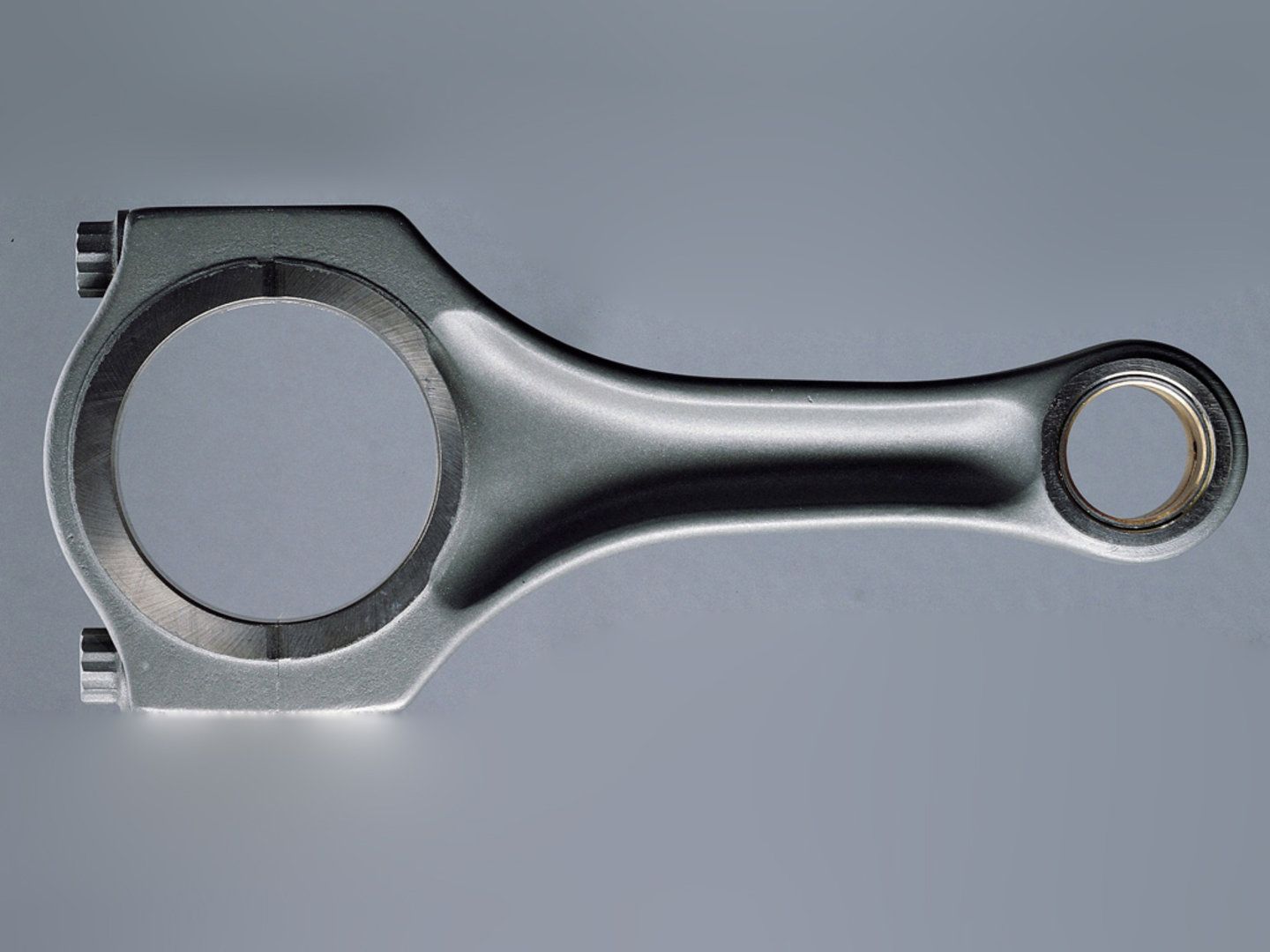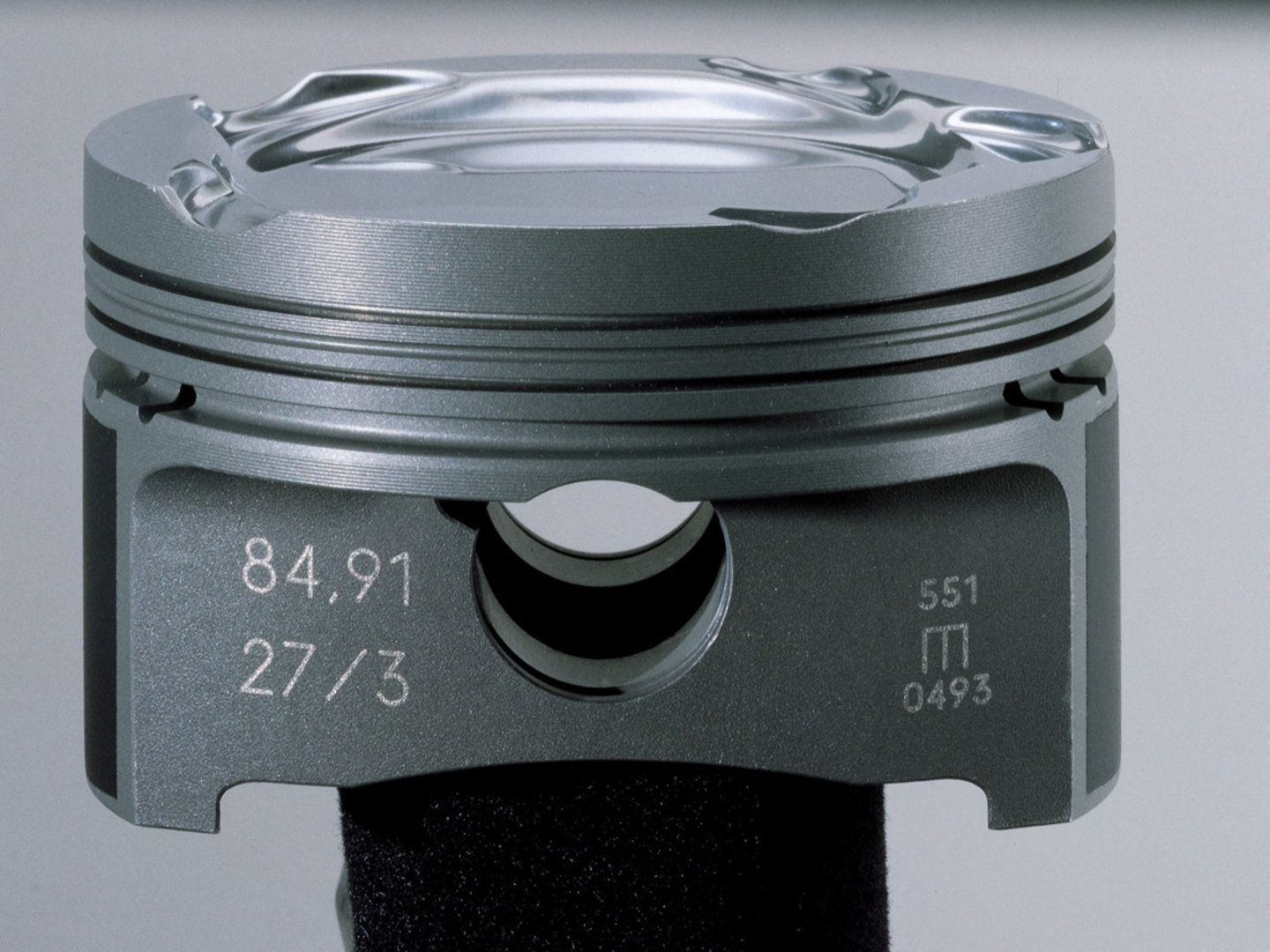In 1984, Ferrari->ke252 took the world by surprise when it revived the iconic GTO nameplate with a V-8-powered sports car.->ke506 Developed as a homologation special based on the 308 GTB, the 288 GTO ultimately became Ferrari's range-topping model between 1984 and 1987, and unlike its predecessor, it carried a twin-turbo V-8 behind the seats instead of a naturally aspirated V-12. The V-8 legacy continued with the mind-boggling F40->ke434 between 1987 and the mid-1990s, but Maranello went back to the high-revving V-12 with the F50->ke429 in 1995.
Significantly more exclusive than the F40, the F50 was built in only 349 units over two years and hit the streets with a 4.7-liter V-12 under the hood. The powerplant was based on the 333 SP's, a race car->ke148 built by Dallara that marked Ferrari's official return to sports car racing after a 20-year absence in 1994.
But despite using a racing engine, the F50 never made it onto the track. While Ferrari developed a race-spec version to replace the F40 LM and Evoluzione, the project was cancelled as the Italians were unhappy with the FIA having allowed homologation specials such as the Porsche 911 GT1 join the BPR Global GT Series. The said race car was called the F50 GT and continued its life as a very exclusive road-legal vehicle sold to select customers. A sad yet interesting story, more of which you'll find out in the review below.
Continue reading to learn more about the Ferrari F50 GT.
1996 Ferrari F50 GT
- Make: Array
- Model: 1996 Ferrari F50 GT
- Horsepower: 680@10500
- Torque: 8000
- Transmission: 6-Speed Sequential
Exterior
In order to become a full-fledged race car, the F50 received numerous aerodynamic upgrades. The modifications were made by Michelotto, the same company that assisted Ferrari in developing the F40 GTE and 333 SP race cars. The front end was altered to feature larger air intakes and a more pronounced splitter, while the rear received a much larger, adjustable wing instead of the stock integrated unit. The GT also gained a fixed roof with a big scoop to feed air to the engine and a metal cover atop the mid-mounted powerplant. Around back, Michelotto added a race-spec diffuser and moved the exhaust pipes from the sides of the bumper closer to the center. Already a menacing machine, the F50 became a lot more aggressive when Michelotto finished working on it.
Too bad it didn't get the chance to showcase its bodywork on the race track, against proper competition.
Exterior Dimensions
|
Length |
4,578 MM (180.23 Inches) |
|
Width |
1,986 MM (78.18 Inches) |
|
Height |
1,092 MM (42.99 Inches) |
|
Wheelbase |
2,580 MM (101.57 Inches) |
|
Front track |
1,620 MM (63.77 Inches) |
|
Rear track |
1,594 MM (62.75 Inches) |
Interior
In order to shave several pounds off the curb weight and align the F50 to the FIA's requirements for the BPR Global GT Series, Ferrari stripped off most of the interior. The standard instrument cluster was ditched in favor for a digital screen, while the clean dashboard received numerous buttons and switches. A lighter, Alcantara-wrapped steering wheel replaced the stock unit. Ferrari also removed the leather sports seats, replacing them with a single race-spec, lightweight bucket seat. As with most race cars, the process also involved ditching the center console, the floor mats, and the door panels.
Drivetrain
Ferrari used the same 4.7-liter V-12 found in the F50 for the GT, but extensive modifications took the output to 750 horsepower and 390 pound-feet of torque, 236 horsepower and 43 pound-feet more than the standard model. All that oomph was routed to the rear wheels through a six-speed sequential gearbox with a three-disc carbon clutch.
Thanks to its enhanced aerodynamics and the fact that it was no fewer than 712 pounds lighter than its road-going sibling at 2,000 pounds, made it nearly a second quicker. The GT needed 2.9 seconds to hit 60 mph versus the F50's 3.7-second benchmark, while its top speed was estimated at around 236 mph, some 34 mph more than the stock version.
The F50 GT was so quick and nimble that preliminary results around the Fiorano track revealed it was faster then the 333SP Le Mans prototype.
Drivetrain Specifications
|
Type |
rear, longitudinal 65° V12 |
|
Bore/stroke |
85 x 69 mm |
|
Unitary displacement |
391.54 cc |
|
Total displacement |
4698.50 cc |
|
Compression ratio |
11,9:1 |
|
Maximum power |
750 HP @ 10,500 RPM |
|
Power per liter |
160 HP/L |
|
Maximum torque |
390 LB-FT @ 7,500 RPM |
|
Top speed |
376 KM/H (233 MPH) |
|
Acceleration 0-100 km/h |
2.9 sec |
Prices
Ferrari never unveiled how much it cost to develop the F50 GT and the actual figure remains a mystery to this day. Even though Ferrari sold the completed GTs to customers who were told not to race the cars in modern race series, the sums were never disclosed.
In the beginning, Maranello planned to build six GT chassis, but only three were completed before the project was halted. Only one complete car was put together for testing on chassis 001. Chassis 002 and 003 received bodies after the GT program was cancelled and all three cars were sold to Ferrari customers. The remaining incomplete chassis were apparently destroyed.
Chassis 001, or the original development mule, was sold to Art Zafiropoulo, a renowned Ferrari collector. Art displayed the car at numerous events and even raced it at the Monterey Historics. He also crashed it on two occasions, and had to have it repaired by Ferrari.
Chassis 002 was sold to Japanese collector Yoshikuni Okamoto, while the third GT was purchased by Jim Spiro. The latter was auctioned off in 2000 for $1.43 million, ending up in Australia. More recently, it was sold in England for an undisclosed amount.
With just three cars on the road and only one of them having hit the auction block more than 15 years ago, it's rather difficult to put a price on the F50 GT. However, given the rarity and the unique specs of the car, a GT could probably fetch close to $10 million nowadays.
Competition
Porsche 911 GT1 Strassenversion
Given that the F50 GT never made it on the race track, it would be pointless to compare it to other BPR series racers. However, as a road car, the Ferrari can be benchmarked against the Porsche 911 GT1 Strassenversion, the street version of the race car that chased Maranello out of endurance racing in 1995. Fitted with a detuned version of the GT1's 3.2-liter flat-six, the Strassenversion hit the streets with 544 horsepower, a 0-to-60 mph sprint of 3.8 seconds, and a top speed of 191 mph. Despite its name, the GT1 had very little in common with the 011, sharing most of its components with the iconic 962 race cars. Only 20 units of the Strassenversion were built and sold to select customers. Nowadays, these road-legal race cars change owners for more than $1 million.
Find out more about the Porsche 911 GT1 Strassenversion here.
McLaren F1 GT
Also a road-legal supercar based on a racer, the F1 GT was developed as a homologation special for the F1 GTR. The GT drew its juice from the same 6.1-liter V-12 developed by BMW and its output was similar to the standard F1 at 627 horsepower and 480 pound-feet of twist. The GT needed only three seconds to hit 60 mph on its way to a top speed of 206 mph. Built in only three units, one of which is still owned by McLaren, the GT is the rarest F1 ever built. Putting a price on this car is impossible given that the two customer GTs haven't been auctioned or sold recently, but it's safe to assume that they could fetch in excess of $10 million in 2016.
Read more about the McLaren F1 GT here.
Conclusion
Like most historic race car manufacturers, Ferrari has failed more than once in its goal to build the perfect race car. However, the F50 GT marked a very rare moment when Maranello simply decided to call it quits. The decision may have been rash given the GT's results in testing, but the F50 would have probably had a lot of trouble in keeping up with the quicker and more reliable Porsche 911 GT1. It's really a shame that Ferrari refused to at least try the GT in an official racing series, but as it turns out, the race-spec F50 didn't need any actual track time in order to become a legend. Of course, I would have rather remembered the F50 GT as a successful race car than a project that died in its infancy, but I'm sure that the three people currently enjoying these V-12-powered monsters wouldn't agree.


